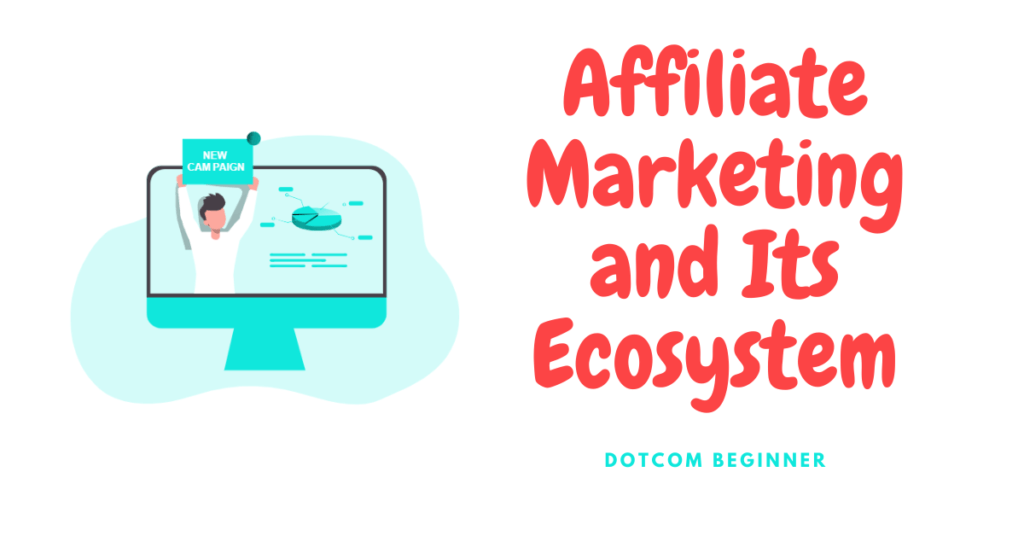Affiliate marketing is a fantastic way for businesses to reward those who help promote their products or services. When an affiliate promotes a product, and someone makes a purchase through their unique referral link, the affiliate earns a commission. With the rise of digital marketing, email campaigns have become a key way for affiliate marketers to connect with their target audience and drive sales.
Email campaigns are a cost-effective way to reach a large audience, build relationships, and increase conversions. Affiliate marketers can promote their products, talk to their subscribers, and grow their businesses by using the power of email.
This blog post is about giving you a comprehensive guide to creating an effective affiliate marketing email campaign. From understanding the basics of affiliate marketing to the best practices and solutions for common challenges, we’ll cover everything you need to know to make your email campaigns a success. Whether you’re just starting out or you’re a seasoned affiliate marketer, this guide will help take your email campaigns to the next level.
🔑 Key Takeaways (TL;DR)
- Affiliate marketing is a type of performance-based marketing in which a business rewards its affiliates for bringing in customers or making sales.
- Email campaigns are a crucial component of affiliate marketing as they help reach the target audience and increase conversion rates.
- Building an effective affiliate marketing email campaign involves identifying the target audience, offering a compelling deal, crafting effective email copy, selecting suitable affiliate products, and continually testing and optimizing the campaign.
- Best affiliate marketing email campaign practices include personalization and segmentation, consistency and timing, mobile optimization, building trust and credibility, and compliance with laws and regulations.
- Common challenges in affiliate marketing email campaigns include low open and conversion rates, spam filters and deliverability issues, competition, and balancing affiliate and brand goals. Solutions include improving email content, addressing deliverability issues, staying ahead of the competition, and striking a balance between the affiliate and brand goals.
🚀 Understanding Affiliate Marketing
Affiliate marketing works by establishing a relationship between a business and an affiliate. The business gives the affiliate a unique referral link that they can use to spread the word about their products or services. The affiliate earns a commission when a customer clicks on the link and makes a purchase. The commission is either a percentage of the sale, or a flat fee agreed upon between the company and the affiliate. The affiliate’s goal is to promote the business’s products and drive sales, while the business’s goal is to increase visibility and reach a wider audience.
There are several different types of affiliate marketing programs, each with its own unique structure for compensating affiliates. Some of the most common types include pay-per-sale, pay-per-click, pay-per-lead, and pay-per-impression. In a pay-per-sale program, affiliates earn a commission for every sale made through their referral link. In a pay-per-click program, affiliates earn a commission for every click on their referral link, regardless of whether a sale is made. In a pay-per-lead program, affiliates get a commission for every lead that comes from their referral link, like when someone signs up for an email list or fills out a form. And in a pay-per-impression program, affiliates earn a commission for every impression made on a promotional ad, such as a banner ad.
Affiliate marketing offers several benefits for both businesses and affiliates. It is a cost-effective way for businesses to reach a large audience without investing in expensive advertising. It also helps increase visibility and reach a wider audience. Affiliate marketing also has results that can be measured and let businesses keep track of their return on investment. This can lead to increased sales and revenue for businesses. On the other hand, affiliate marketing creates a win-win relationship between businesses and affiliates, where both parties benefit from the partnership.
🚀 Building an Email Campaign for Affiliate Marketing
The first step in making a successful email marketing campaign is to figure out who you want to reach. Who are you trying to reach with your message? What are their interests and pain points? By knowing your target audience, you can create a message that speaks to them and makes it more likely that they will buy from you.
Once you know your target audience, you need to make them an offer that will make them want to act. This could be a discount, a free trial, or an opportunity to use a product or service before anyone else. The offer you make should be relevant to the people you want to reach and in line with the goals of your email campaign.
The next step is to craft the email copy that will deliver your message and offer it to your target audience. The copy should be interesting, clear, and to the point and have a strong call to action that gets people to act. The tone of the email should be friendly and conversational, and it should build trust and rapport with your subscribers.
When choosing affiliate products to promote in your email campaign, it’s important to choose products that are relevant to your target audience and aligned with the goals of your campaign. Research the products and the companies that make them and make sure they are of good quality and that their marketing materials are well-received by the people you want to sell to.
Testing and improving your campaign is the last step in making a successful email campaign for affiliate marketing. A/B testing is a great way to compare different elements of your email, such as subject lines, calls to action, and offers, to see what resonates with your audience. Over time, you can get better results from your email campaigns if you keep an eye on how they are doing and make decisions based on the data.
🚀 Best Practices for Affiliate Marketing Email Campaigns
The key to a successful email campaign for affiliate marketing is to personalize your emails and divide your readers into different groups. By knowing what your audience is interested in and what they like, you can create content that is targeted, relevant, and interesting to them. Personalization can be as simple as using the person’s name or as complicated as making the message fit the person’s needs and interests. Segmenting your audience allows you to send targeted messages to different groups based on their behavior and demographics.
Consistency is important in affiliate marketing email campaigns. Emailing your subscribers regularly and at the right time can help you build a relationship with them and keep them interested. However, it’s important to strike the right balance between frequency and relevance. Don’t overdo it with too many emails, as this can lead to unsubscribes and lost subscribers. Instead, focus on sending high-quality, relevant content that your subscribers will look forward to receiving.
Mobile devices are becoming more and more popular, so your affiliate marketing email campaigns must be mobile-friendly. This includes designing emails that are easy to read and navigate on smaller screens and ensuring that links and calls-to-action are easily clickable.
For your affiliate marketing email campaign to work, you need to build trust and credibility with your subscribers. This means being honest about your affiliation, providing real, useful content, and giving great customer service. By building a relationship based on trust, you’ll be more likely to convert subscribers into customers and earn their loyalty in the long term.
Lastly, it’s important to know the laws and rules about affiliate marketing and email marketing and to follow them. This includes the CAN-SPAM Act, which regulates commercial email and says that you have to give subscribers a way to stop getting emails from you. Failure to comply with these laws and regulations can result in penalties and legal consequences, so it’s important to stay informed and up-to-date.
🚀 Challenges and Solutions in Affiliate Marketing Email Campaigns
Low open and conversion rates are one of the hardest things to deal with in email marketing campaigns. To get around this problem, it’s important to know the target audience, make an offer that’s hard to refuse, and write an email copy that speaks to the reader. Personalization and segmentation, consistency and timing, and making sure the email works well on mobile can all help get more people to open and click on it.
Another problem with affiliate marketing email campaigns is the risk of spam filters and problems getting the emails to the right people. To avoid these problems, it’s important to follow best practices for email marketing, like getting permission from subscribers before sending emails, avoiding trigger words and phrases, and keeping a high sending reputation.
The affiliate marketing industry is highly competitive, and it can be challenging for affiliates to stand out in a saturated market. To get around this problem, it’s important to make the brand stand out and give subscribers something they can’t get anywhere else. Affiliates can keep their edge in the market by staying up-to-date on industry trends and new products.
Balancing the goals of the affiliate and the brand can be a challenge in affiliate marketing email campaigns. To solve this problem, both parties must agree on a clear set of goals and communicate and work together often to ensure they are on the same page. Affiliates and brands can reach their goals and get results if they work together and put the success of the campaign first.
✍🏽 Conclusion
In conclusion, affiliate marketing email campaigns are a powerful way for businesses to reach a large audience and boost sales. To learn the basics of affiliate marketing and make an effective email campaign, you need to figure out who your target audience is, make a compelling offer, write the email copy, choose the right affiliate products, test the campaign, and make any necessary changes.
You can make your email campaigns more successful by following best practices like personalization and segmentation, consistency and timing, mobile optimization, building trust and credibility, and following laws and rules. Even though there are problems, like low open and conversion rates, spam filters and delivery problems, competition and saturation, and balancing affiliate and brand goals, there are ways to get around these problems and reach your goals.
We hope that this guide has given you some useful ideas and motivation to start your own email marketing campaigns for affiliates. Remember, the key to success is to always focus on delivering value to your subscribers and building strong relationships with them. So go ahead, experiment with different strategies, and find the best formula for you and your business. Good luck on your affiliate marketing journey.

